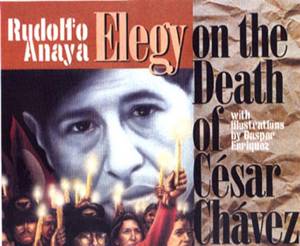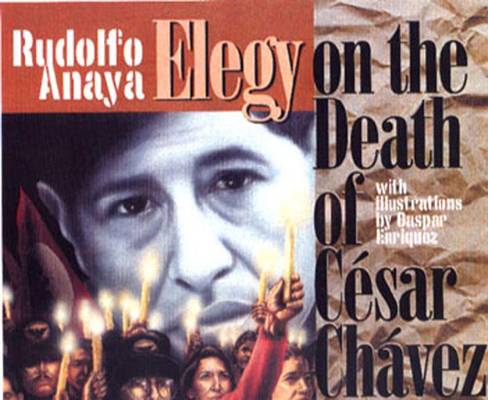
- Afhalen na 1 uur in een winkel met voorraad
- Gratis thuislevering in België vanaf € 30
- Ruim aanbod met 7 miljoen producten
- Afhalen na 1 uur in een winkel met voorraad
- Gratis thuislevering in België vanaf € 30
- Ruim aanbod met 7 miljoen producten
Omschrijving
The heroic life of labor and civil rights activist César Chavéz greatly influenced the political and creative thinking of famed Chicano novelist Rudolfo Anaya. After Chavéz' death in 1992, Anaya wrote this poem eulogizing the man and his life's work. Echoing Shelley's elegy on the death of John Keats, the poem expresses the grief of la gente, but closes by calling all peoples together to continue the non-violent struggle for freedom and justice. The book--endorsed by the César Chavéz Foundation--includes an essay by Anaya detailing the effect that Chavéz had on his own vision and a chronology of Chavéz' life. Powerful super realistic illustrations by Gaspar Enriquez bring home the significance of César Chavéz to the American cultural landscape.
This elegy captures the love of farm workers and the Latino community, all who yearn for justice, for this irreplaceable hero. César's life is the lucero, the light that provides vision to the path, with the glow of energy generated by the struggle. This elegy invites all to march in César's path, to attain the hope and promise of his legacy--a legacy made simple by César so everyone can participate in the quest for justice. César's lucero spotlighted the attainable victory, the solution to end the suffering of farm workers, a union, the farm workers' house of justice where those that feed the world can end their suffering and have a final voice over their lives and destinies. --Dolores Huerta, co-founder of the United Farm Workers Rudolfo Anaya (his classic novel Bless Me, Ultima has 1,000,000-plus in print) has earned international acclaim for his skillful mingling of realism, fantasy and myth while exploring the experiences of Hispanics in the American Southwest. Besides being the author of numerous novels and children's books, Mr. Anaya has been called the godfather of Chicano literature and un hijo del pueblo for his work as an activist for the literature of his people and his region. He lives in Albuquerque, New Mexico. Artist Gaspar Enriquez is nationally known for his super-realistic, airbrush paintings of young men and women from the barrios of his hometown El Paso. Using the same technique, he collaged images of César Chavéz, farm workers, police, newspaper article, fields of grapes and icons of La Raza and Aztlán to create the ambiance of the life and times of this hero.Specificaties
Betrokkenen
- Auteur(s):
- Illustrator(s):
- Uitgeverij:
Inhoud
- Aantal bladzijden:
- 32
- Taal:
- Engels
Eigenschappen
- Productcode (EAN):
- 9780938317807
- Verschijningsdatum:
- 1/04/2004
- Uitvoering:
- Paperback
- Formaat:
- Trade paperback (VS)
- Afmetingen:
- 167 mm x 201 mm
- Gewicht:
- 136 g

Alleen bij Standaard Boekhandel
Beoordelingen
We publiceren alleen reviews die voldoen aan de voorwaarden voor reviews. Bekijk onze voorwaarden voor reviews.











